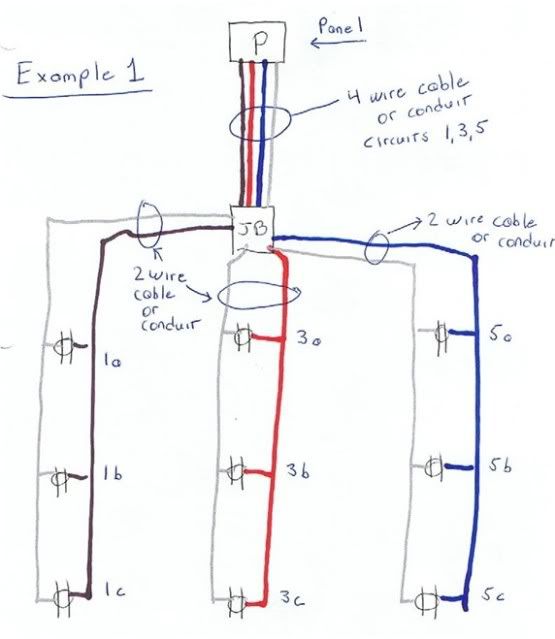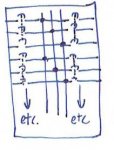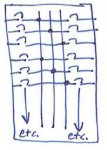For 3-phase 208/120V panels, if 3 consecutive circuits lets say #1, #3,  (feeding receptacles in 1 circuit per office lets say) are in the same conduit and share the same neutral then these are considered a multiwire branch circuit and need a method for a simultaneous disconnect?
The NEC uses a multiwire branch circuit example that shows two hot conductors going to a receptacle and says a simultaneous disconnect is required to prevent someone working on a live circuit. This makes sense for a receptacle sharing two hot conductors since they are terminated very close to each other. But, does it make sense to do the same simultaneous disconnect for other multiwire branch circuits like the one I described?
The NEC uses a multiwire branch circuit example that shows two hot conductors going to a receptacle and says a simultaneous disconnect is required to prevent someone working on a live circuit. This makes sense for a receptacle sharing two hot conductors since they are terminated very close to each other. But, does it make sense to do the same simultaneous disconnect for other multiwire branch circuits like the one I described?




